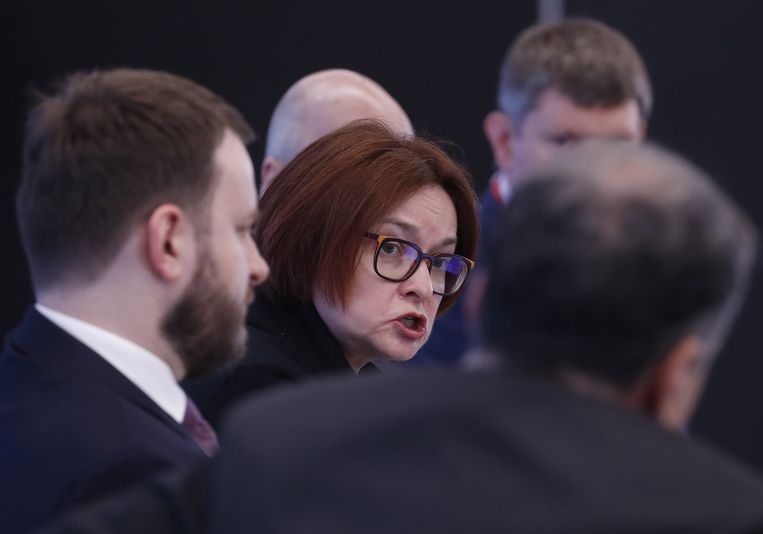The exchange rate is said to be a country’s thermometer, reflecting its economic health in a single number. In the case of Russia, it is not too good due to the war in Ukraine. This year alone, the ruble has lost about a quarter of its value against the dollar.
The doctor on duty is Elvira Nabioellina, the president of the Russian central bank. After an emergency meeting on Tuesday, it suddenly raised the policy rate from 8.5 to 12 percent, a treatment that was supposed to prop up the falling rate of the ruble. It had crossed the 100 rubles per dollar mark last week, for the first time since March last year.
In a statement, the central bank states that the interest rate hike is aimed at “limiting risks to price stability”. The Russian central bank has an inflation target of 4 percent. At the beginning of August, inflation was 4.4 percent.
26 billion euros shortfall
Currency depreciation has been on the rise for several months, something Nabioellina attributes to higher government spending and a labor shortage. In the first seven months of this year there was a budget deficit of 26 billion euros, while in the same period last year, thanks to the exceptionally high oil and gas income, there was still a surplus. And soldiers who fight cannot work.
The higher interest rate should make domestic savings more attractive and thus discourage consumption. Bad news for the economy, which is already in the doldrums because of the international sanctions against Russia. Gross domestic product is estimated to be 8 percent smaller by 2026 than if war had not broken out.
“The recent acceleration in the ruble weakness may indicate that there are cracks in capital controls, and that money is moving faster out of Russia as a result,” Commerzbank currency strategist Ulrich Leuchtmann told Bloomberg news agency. “The interest rate hike will hardly convince people who have the ability to move their money out of Russia not to do so.”
Another way the Russian central bank can support the ruble is by tapping into its currency reserves. She does not want to take that option, Nabioellina stated a week ago. That firepower is limited anyway. About 275 billion euros in currency reserves are held in accounts abroad, which the central bank no longer has access to as a result of the sanctions imposed.
Criticism from the Kremlin
The Kremlin had criticized the central bank’s ‘soft’ policy on Monday. According to Maxim Oreshkin, an economic adviser to President Vladimir Putin, Nabioellina and her colleagues are responsible for the ruble weakness. Their policies would have led to too many loans, pumping too much money into the economy. Oreshkin called for “a strong ruble.” A few hours later, the central bank announced the emergency meeting, raising questions about its independence.
The decision to raise interest rates has not only an economic, but also a political aspect, says Stuart Cole, chief economist at Equiti Capital. “A weakening ruble increases the risk of rising inflation, but also sends a signal to the Russian public about the costs of invading Ukraine.”
Analysts think that the Russian central bank can now halt the fall of the ruble, but that this is not sustainable in the longer term. “As long as the war continues, things will get worse for the Russian economy and the ruble,” said Bluebay Asset strategist Timothy Ash. Raising policy rates will not solve anything. It can only temporarily slow down the pace of ruble depreciation at the cost of slowing economic growth. The core problem is the war and the sanctions, which must be solved.”


